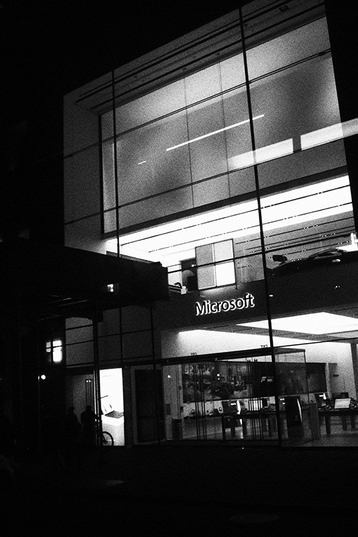In 2014, as developers were preparing ground in rural Virginia for a data center, they found a cemetery.
An extensive investigation by ProPublica found that the developers, Microsoft, and Mecklenburg County downplayed the historic African American grave site so that they could quietly move the bodies elsewhere.
In doing so, they failed to notify living relatives, damaged remains, and potentially left artifacts behind.
After the cemetery was discovered, the county and consultants turned to archaeologists - as required by federal law.
They hoped that the site wouldn’t be deemed eligible for the National Register of Historic Places, which could mean that development could not take place at the site.
Instead, archaeologists determined that the cemetery “is eligible for inclusion” on the historic registry, with the fact that one of the visible gravestones was of Stephen Moseley, who died in 1930.
Moseley, and his toddler son Fred, were Black - suggesting the cemetery was significant to the history of African American life and death in Southside Virginia.
“It is recommended that the area be avoided,” the report said.
In emails seen by ProPublica, Alexis Jones, a consultant with a firm called Enviro-Utilities, said that "we will challenge his recommendation."
The costs for the work done by the county and its consultants were covered by Microsoft. Jones this year joined Microsoft as an environmental permitting program manager.
Enviro-Utilities and the county pushed for the archaeologists to reverse their recommendation that the cemetery belongs on the National Register, and claimed that there was no proof that all those buried there were Black.
The archaeologists added a line saying that they could not rule out white farmers being buried here, but even Jones' own boss admitted that "all the evidence available at this stage suggests” it was a Black cemetery.
So the company turned to another archaeologist to try to get another opinion, but it backfired. “Jim Crow would not have had whites and blacks buried that closely together,” the archaeologist said, recommending more research.
Instead, the county did what it had to under state law - run a legal notice among the ads and classifieds in several weekly print editions of The Mecklenburg Sun.
The notice for the potential removal of Moseley’s grave ran is a paper that his great-grandson works for.
But staff writer Mike Moseley did not see the small ad. ProPublica notes that it would not have been hard for the county to find him, nor would it have been difficult to track down Stephen Moseley's other descendants.
Given his role as a long-time local reporter, "everyone who works for the county knows me,” Mike Moseley said.
The county administrator who oversaw the permitting process for the Microsoft data center has since contacted relative David Moseley to buy nearby land, possibly for a data center expansion. “If they can find us to buy the land, why couldn’t they find us for the cemetery?”
In total, 37 graves were found. Once no one came forward, and the state Department of Historic Resources gave permission to excavate the remains, the process was swift.
The excavation happened during heavy rain, with the graves filling with water as they were dug out, and left in the wet soil for days.
The “remains were saturated and in very poor condition,” according to a report by the excavation firm Circa-Cultural Resource Management LLC. They were originally set to be sent to a Radford University forensic anthropologist, but were deemed too damaged to be worth studying.
“WAYNE, this is a GOOD thing!” Jones wrote to the county administrator. “This would be a huge money and time savings for us.”
The rushed process also meant that important artifacts and grave offerings could have been missed. Microsoft flew a drone over the workers as they dug, urging them to move faster. “There will be no hiding place!” a Microsoft project manager wrote in an email as the crew cut down trees.
What was left of the bodies, as well as items like eyeglasses and a comb, were packed in plastic crates and stored in an office.
Eventually, the 37 bodies were moved to just four cemetery plots one town to the north.
ProPublica notes that similar incidents in the county with white cemeteries involved far greater efforts to find relatives so that the graves could be carefully moved to sites chosen by the descendants.
The Moseleys, who did not know of the destruction of the cemetery until they were contacted by ProPublica, did not know where they were moved to. They would have asked that they moved them to the Jerusalem Temple United Holy Church Cemetery, where the Moseleys have buried their relatives since the 1960s.
When they went in search of the new gravesite with reporter Seth Freed Wessler, they could not find the promised marker that the excavation report said would be placed “indicating how many remains, where they were removed from, date, and known family names.”
A clerk told them: “There are no names. It just says ‘assorted bones.'"
When they found the area, the original Stephen and Fred Moseley gravestones still existed, the only survivors of the move.
“I would not have known where he was buried,” Mike Moseley said, repeatedly, and cried.
In a statement, Microsoft said that "the County followed all applicable federal, state, and local laws.” The company filed to build another campus in Mecklenburg County this October.

